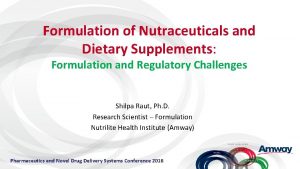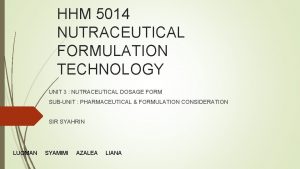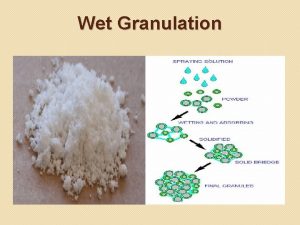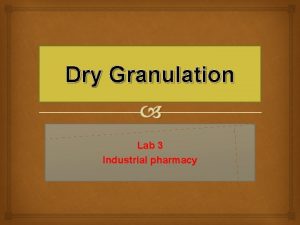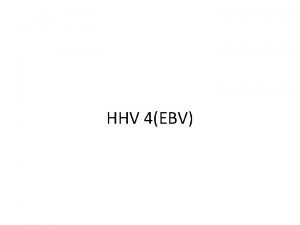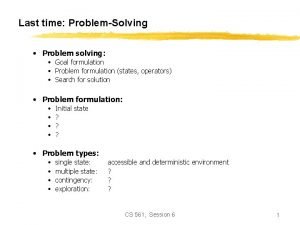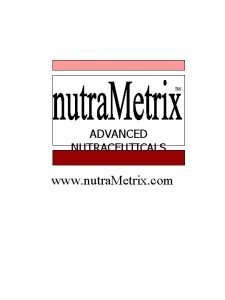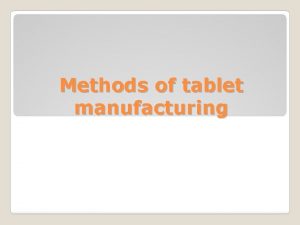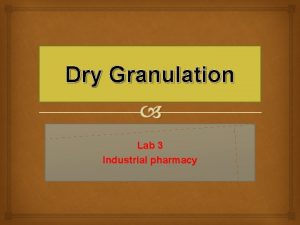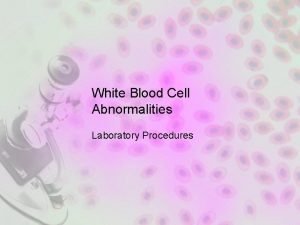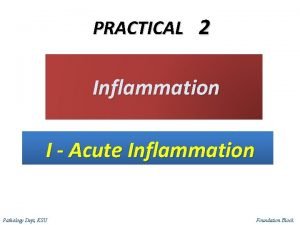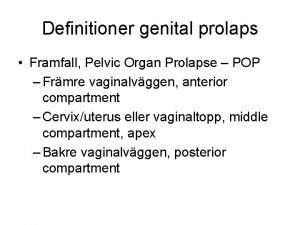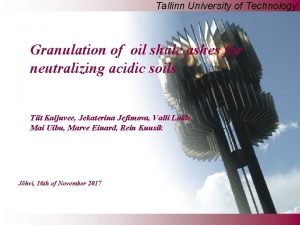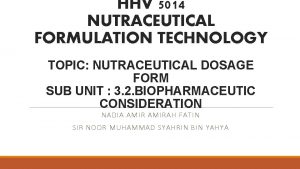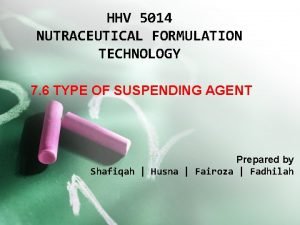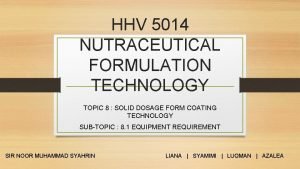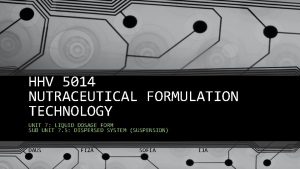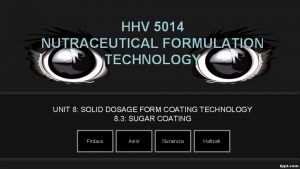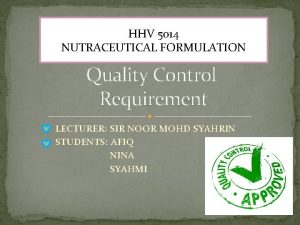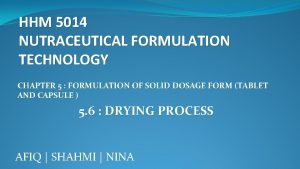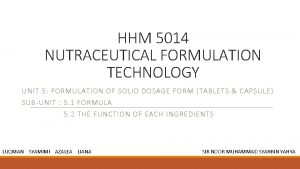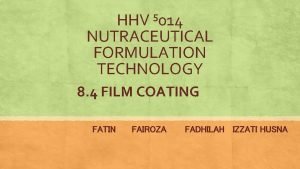HHV 5014 NUTRACEUTICAL FORMULATION TECHNOLOGY Title Granulation Process


















- Slides: 18

HHV 5014 NUTRACEUTICAL FORMULATION TECHNOLOGY Title: Granulation Process Fatin Husna Fadhilah Fairoza

DEFINITION Granulation is the process of collecting particles together by creating bonds between them. Bonds are formed by compression or by using a binding agent

REASON TO GRANULATE Improve flow Improve compression characteristics Improve content uniformity Improve the appearance of the tablet Decrease dust generation and reduce employee exposure to drug product

EQUIPMENT AND PROCESS CONVENTIONAL METHOD ADVANCED METHOD Wet granulation Fluidized bed granulation Dry granulation Spray drying granulation Freeze granulation

CONVENTONAL METHOD 1) wet granulation Mixing of drug and excipient. Mixing of binder solution with powder mix. Coarse screening of wet mass using a suitable sieve. Drying of moist granules. Screening of dry granules through a suitable sieve.

Video

ADVANTAGES DISADVANTAGE S Improve flowability and compressibility of the material. An expensive process. Fast method to prepare controlled release granules. Process loss of material was high. Improve homogeneity of dosage form. Unsuitable for moisture sensitive, thermo-labile.

2) Dry granulation Active substance excipient, binding material. Measurement Mixing Compaction Chopping Sieving Adjustment of particle size

video

ADVANTAGE DISADVANTAG E Improved flow by increasing particle size. Increases the potentiality of cross contamination. Granulation without of any liquid. Does not permit uniform color distribution. Required less energy. Tends to create more dust.

ADVANCED METHOD 1) Fluidized bed dryer Hot air passed at high pressure through a perforated bottom of the container containing granule to be dry The granule are lifted from the bottom and suspended in the stream of air This is called fluidized state

Advantages • Reduce dust formation • Improve house keeping and workers safety. Disadvantages • Cleaning was label intensive and time consuming. • Assuring reproducibility was troublesome.

2) Spray drying granulation • Liquid feed is pumped through an atomizer device that produces fine droplets into the main drying chamber.

Advantages Disadvantages A rapid and continuous process High installation cost Suitable for heat sensitive product Solid materials cannot be dry Cost effective Equipment is bulky, cleaning is time consuming

3) Freeze granulation • Initial liquid solution or suspension is frozen and the water is remove by sublimation.

Video

Advantages Disadvantages Equipment can be easily clean up Need for sterile diluents upon reconstitution Organic solvent can be recycle Increase handling and processing time High yield with low material waste High cost equipment

 Nutraceutical formulation
Nutraceutical formulation Nutraceutical formulation
Nutraceutical formulation Wet granulation
Wet granulation Slugging dry granulation
Slugging dry granulation Hhv
Hhv Hhv
Hhv Hhv-4
Hhv-4 Why problem formulation follow goal formulation
Why problem formulation follow goal formulation Nutra metrix
Nutra metrix Dry compression method
Dry compression method Wet granulation steps
Wet granulation steps Stoma granulation tissue
Stoma granulation tissue Advantages of dry granulation
Advantages of dry granulation Neutrophil
Neutrophil Normal pericardium
Normal pericardium Circumcision granulation tissue
Circumcision granulation tissue Granulation
Granulation Neokorteks
Neokorteks Céphalhématome calcifie traitement
Céphalhématome calcifie traitement
